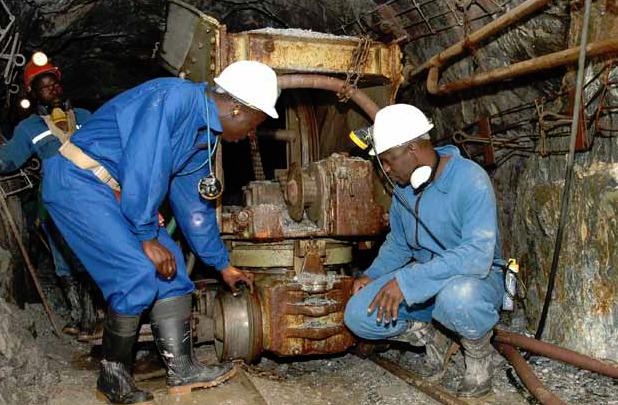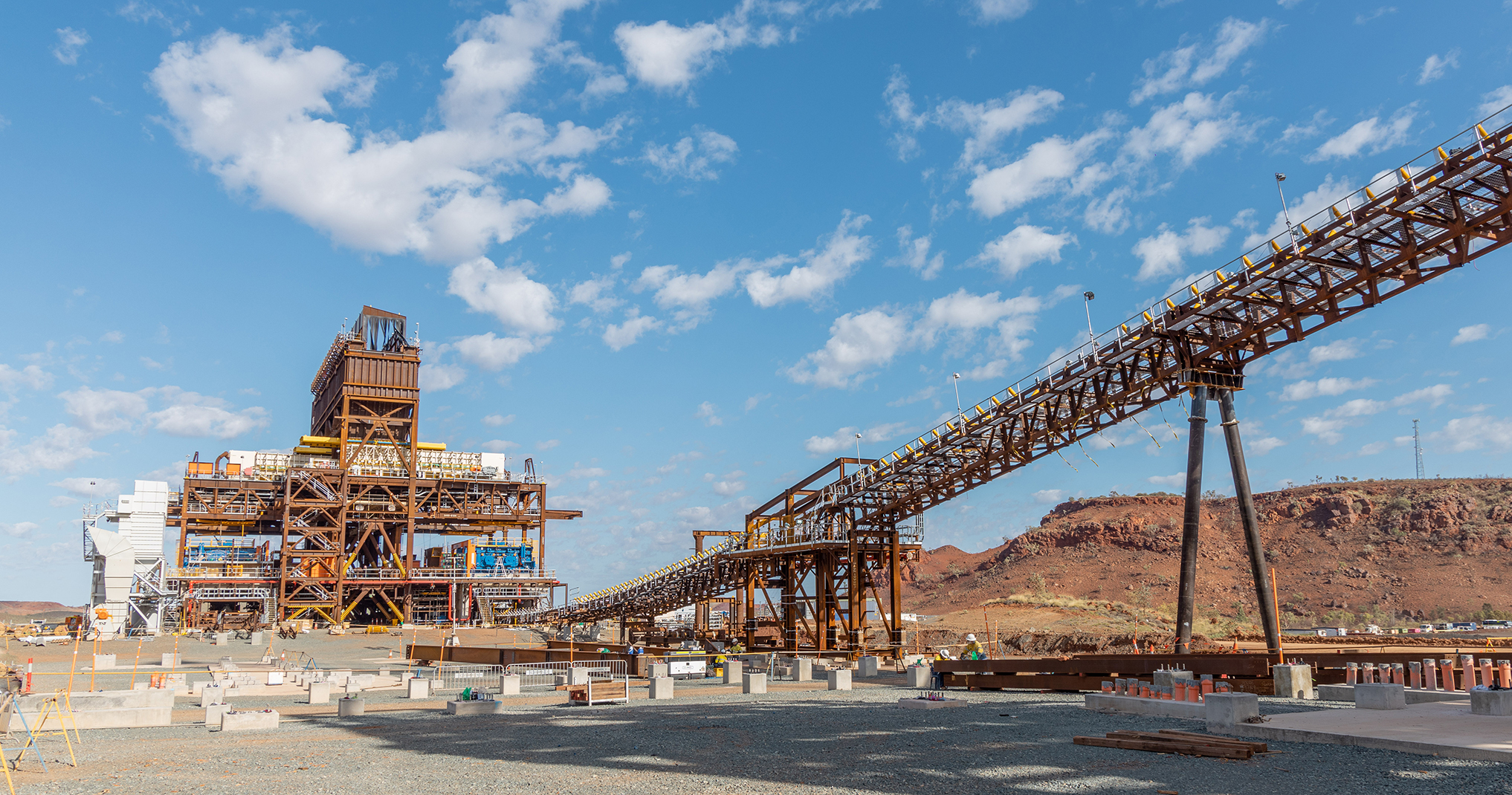
Zimbabwean ferrochrome producer Zimasco is emerging strongly from the economic downturn. CEO Sydwell Jena talks to Gay Sutton about turning a challenging situation into an operational advantage, and about the company’s plans for growth.
Africa is a continent rich in resources—not only at the human level but also in terms of its minerals. Mining has long played a key role in Africa’s development. The oldest known mine on archaeological record is the Lion Cave in Swaziland, a landlocked country to the south of Zimbabwe, which is sandwiched between South Africa and Mozambique. This ancient mine has been carbon dated to the palaeolithic period some 43,000 years ago, when stone-age man mined the ground hematite and ground it to produce the red pigment called ochre.
The ancient Egyptians were also prolific miners, venturing south from their own country into Nubia in the search for gold and precious stones such as malachite and turquoise. Visitors from India, Rome and ancient Greece are also believed to have worked the continent. However, it wasn’t until the mid nineteenth century and the discovery of diamonds at Kimberley followed by gold at Pilgrim’s Rest and Barberton, that a great gold rush toWitwatersrand finally opened the continent for mining.
Since that time, natural resource exploitation in all its forms—coal, mineral and oil—has became one of Africa’s major sources of revenue, and Zimbabwean ferrochrome producer Zimasco has played a proud part in that development. The company can trace its lineage back to 1926, when its precursor African Chrome Mines of Zimbabwe began exporting chromite ore.
Following many evolutions, including a long spell under the Union Carbide Corporation—which ended in 1995 with a management buyout—Zimasco arrived at its current form in 2007. Sinosteel Corporation of China acquired 92 per cent of the holding company, Zimasco Consolidated Enterprises, which had been set up in Mauritius following the management buyout. Meanwhile the Zimbabwe operating company which had officially changed its name to Zimasco Holdings following the buyout, assumed its current name, Zimasco (Private) Ltd.
Today, the company is a significant contributor to ferrochrome production worldwide, and its ongoing operations play an important role in the economy and social well-being of Zimbabwe. Directly employing some 3,000 people across its mining and smelting operations, and indirectly providing employment for around 6,000people, the company is ranked sixth largest ferrochromium producer in the world and boasts an enviable global reputation for quality and efficiency. “Zimasco is well respected in the global marketplace,” explains CEO Sydwell Jena, “and it has consistently supplied a high-quality product to the main global stainless steel mills for the last 25 years—even during the various political and economic upheavals that affected the country.”
Headquartered in Harare, Zimasco mines chrome ore in its own right at Peak Mine and Railway Block in Shurugwi and at Valley Mine. Meanwhile, cooperative and tributor miners are contracted to produce chromite ore exclusively for Zimasco from the company-owned mining lease areas at Railway Block in Shurugwi and along the Great Dyke—a mineral rich geological feature which runs roughly north-south through the centre of Zimbabwe.
In order to manage this resource effectively, Zimasco’s geologists have divided the region into three segments—the North, Middle and South Dyke. Ore currently being mined from the South Dyke appears in a variety of deposit types. Podium deposits are being exploited at Shurugwi and the Valley Mine at Guinea Fowl, while seam deposits are being worked at Lalapanzi and south of Shurugwi. Mining at the Peak and Railway Block mines is largely of an underground nature, where sub-level open-stoping mining methods are employed.
Mining in the northern sector of the Great Dyke is exclusively underground in nature and is outsourced to tributors. In the Middle Dyke section, which is outsourced to tributor and contract miners, a combination of surface strip mining and underground operations is employed.
The ore is transported via rail from each of these mining areas to a 210,000 tonne per annum capacity smelting operation located at Kwekwe. This complex consists of four furnaces in the West Plant, which were constructed between 1965 and 1972, and a further two furnaces in the East Plant, constructed between 1976 and 1980. At Kwekwe, the chromite ore undergoes a range of smelting and crushing processes to produce a high quality carbon ferrochrome alloy. The finished product is then transported by rail across the border with Mozambiqueto the port of Maputo, from where it is shipped to stainless steel mills around the world.
Quality has always been at the heart of Zimasco’s operations, and the company has built strong long-term relationships with its customers in Europe, the Far East and North America, based on product quality. In fact, Zimasco achieved ISO 9001 accreditation way back in 1992 when the standard was still in its infancy, and has progressively updated with each of the subsequent certifications in 1997, 2000 and 2008. “We believe that the acquisition and maintenance of certification to ISO quality standards for the last 18 years has served to bolster and enhance the company's reputation in the global ferrochrome marketplace," Jena says.
Like ferrochrome producers worldwide, Zimasco was affected by the global financial crisis that began during the second half of 2008. “We saw a complete dearth of demand for the product in the fourth quarter of 2008,” Jena explains.
As a consequence, Zimasco switched off its furnaces at the beginning of December 2008 and embarked on a series of cost cutting exercises. "We managed to ride the storm through our ambitious cost saving initiatives and by obtaining significant concessions from our strategic partners and the government,” says Jena—an undoubted recognition of the importance of Zimasco to the local economy.
Production finally resumed in a small way in April 2009, financed by a US$7 million investment from the company’s major shareholder Sinosteel, and then ramped up progressively as market conditions improved, eventually returning to full capacity in April 2010.
Today, the company is once again positioning itself to achieve long term viability. Jena also believes that in such a cyclical business where crises of this nature tend to occur periodically, Zimasco has proven itself to be well equipped to respond quickly and deal with the challenges.
Of course, operating a mining company in Zimbabwe has also presented a number of challenges in recent years, and working successfully within these constraints has strengthened the company’s operational ability. “The hyper-inflationary economic environment coupled with the unfavourable socio-political situation that prevailed in Zimbabwe during the last ten years led, for example, to a significant skills drain in the country,” Jena explains. “And the mining industry was significantly affected. To overcome that we crafted a skills retention and capability programme, which has helped to mitigate against this factor.”
To this day, the company continues to operate a range of training schemes, including a structured two year graduate development programme, a four year apprenticeship programme, and technical development courses that cover a range of disciplines from metallurgical engineering and accounting through to motor mechanics, rigging and HR.
The collapse of the Zimbabwean currency also made global trading more challenging for Zimasco. However, in February 2009, Zimbabwe adopted a multi-currency regime commonly known as dollarization; and this created a relatively more stable operating environment for the company.
The benefits of this have been far reaching. Not only has it slowed the skills drain and led to some expatriate Zimbabweans returning home, it has also created a more stable operating platform. “This has enabled us to re-establish our medium to long term planning and strategy,” says Jena, “as opposed to the short term and survival strategy that was necessitated by the turbulent hyper-inflationary mode that had prevailed over the last ten years. We are now able to devise growth strategies in line with our substantial high quality chromite ore resources.”
Growth is certainly now at the top of the company’s long term agenda. Plans are in place to increase capacity by some 80 per cent through two strategic investments. Firstly, a US$37 million investment is required for the reconstruction of Furnace No. 2, which will increase the company's ferrochrome output from its current level of 180,000 tonnes per annum to 230,000 tonnes per annum. A further investment of US$200 million will then be required for the construction of two new furnaces and a sintering plant to process the high-quality friable resources that are currently left unused, further increasing output to 325,000 tonnes per annum.
However, much needed re-capitalization of key state infrastructure to support Zimasco’s planned growth also needs to take place. Power shortages in Zimbabwe and the Southern African region as well as the need to rehabilitate the country’s rail network and its rolling stock are challenges that must be overcome to achieve these expansion plans. In addition, despite the recent improvements in the social, economic and political landscape of Zimbabwe, much still needs to be done to make the country an attractive investment destination, believes Jena.
The final element in the company's growth strategy is to engage in exploration work. Some 98 per cent of Zimasco's reserves are in the Great Dyke, a geological feature that yields chromite ore across its length and breadth. However, of these extensive reserves, only one per cent is currently ready to be mined, meaning they are in the measured, probable and proven categories. Therefore, a diamond drilling programme has been set up spanning the next five years, to upgrade the categorisation of the known chromite ore resources and increase the proven portion. This will enable Zimasco to fully utilise the planned increased production capacity of the Kwekwe Smelter.
The current viable position and future expansion of Zimasco is undoubtedly going to have a positive impact on Zimbabwe as a nation. The company has long played a significant role in its economy: not only does it bring in revenue—projected to be in the region of US$213 million for 2010—but it is a major user of the country’s infrastructure. "We are the largest user of the country’s rail system,” Jena says. “We move approximately 800,000 tonnes of raw materials and finished product a year by rail and this contributes to the National Railways of Zimbabwe’s continuing viability. We are also the largest consumer of electricity in Zimbabwe, therefore consistently providing the largest single revenue base for the power authority, and impacting positively on its viability.”
Zimasco also plays its part in directly supporting the communities in which it operates. A well equipped health services department provides quality and comprehensive health services to its employees, their dependents and the communities in which it operates. The Chrome Mine Hospital in Shurugwi provides specialist, surgical, pharmaceutical, radiological, laboratory, in-patient, out-patient, occupational and ambulance services. In addition, the company runs four clinics located in Shurugwi, Kwekwe, Lalapanzi and Mutorashanga, and runs a Medically Affected Employee Programme to cater for life threatening diseases such as HIV/AIDS.
“In addition to health services, we are also actively involved in educating the communities in which we operate, with substantial sponsorship of primary, secondary and tertiary education. This includes provision of books, computers, erection, repair and maintenance of infrastructure,” says Jena. The company offers learnership programmes for various levels of school and university graduates, and in recent years, it has also built the Kwekwe Polytechnic College and donated it to the State.
Now, with an expansion programme in place, and a management structure that is able to respond quickly to challenge, Zimasco is well placed to capitalise on the economic upturn. Moreover, as Africa is tipped to be the next region to enjoy rapid globalisation and growth, the company has positioned itself to play a key role in the development of Zimbabwe. www.zimasco.co.zw













